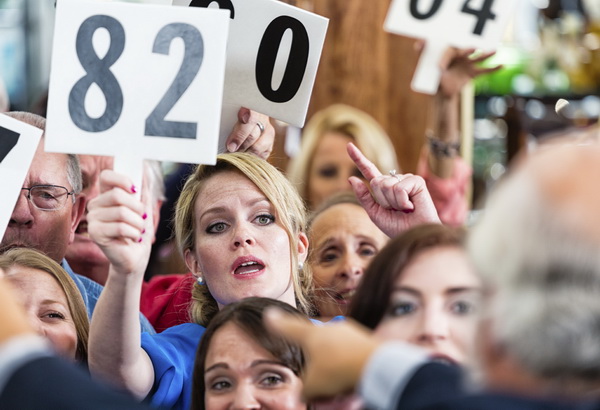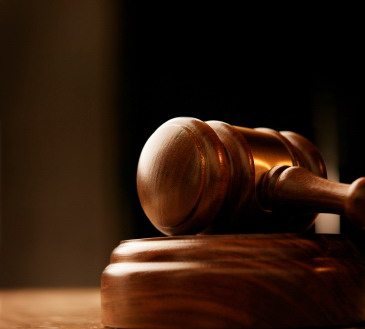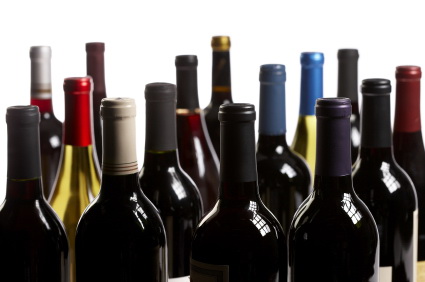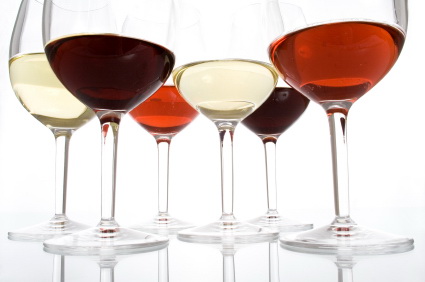 Sitting in the centre row of the auction room, I barely lift my forefinger for the 1945 Château Cheval Blanc. All bidders crane their necks to look at the mysterious woman who has just bid the price of a Porsche.
Sitting in the centre row of the auction room, I barely lift my forefinger for the 1945 Château Cheval Blanc. All bidders crane their necks to look at the mysterious woman who has just bid the price of a Porsche.
“Sold to the gentlewoman in the Prada jacket with embroidered family crest,” the auctioneer says, bringing down the hammer.
The reality: I’m at the back of the room blinking wildly, struggling to remove the eyelash from my eye. The auctioneer just winked back at me — bad news when you’re playing the blood sport of the rich.
Most auction talk is about record-shattering prices paid for rare bottles, such as the six-litre bottle of the  California cult cabernet Screaming Eagle that sold for US$500,000 — that’s US$12,500 a glass.
California cult cabernet Screaming Eagle that sold for US$500,000 — that’s US$12,500 a glass.
Despite the financial markets’ downward spiral over the past few years, the Wine Spectator’s auction index rose 7%. But most bottles don’t achieve vertiginous pricing, and most auctions don’t generate more than sixteen-second bursts of excitement.
In fact, their studied calm is more like that of a tax audit hall, pierced only when someone jumps up with the gleeful news of a bad return.
Worldwide, last year’s wine auction sales of US$92 million were only a small proportion of the total retail market of US$16 billion.
In Ottawa, the share is even smaller because only four groups can legally host auctions: registered charities doing fundraising; executors of estate sales; the LCBO; and sheriffs selling seized illegal wine (though this is often held to be used for evidence and then discarded — a good thing too, considering the quality of most of it).
Despite these limitations, local auctions are on the rise. The first ever was held in 1993, when the Ottawa Arts Court squeezed $18,000 from just 30 bidders. In the last year, twelve auctions offering wine either exclusively or among mixed lots attracted 2,500 people and raised over $700,000 for charity.
Wine auctions are actually efficient fundraisers since the shortest route to social good is gluttony. Appeasing the appetites of the elite has long been an effective way to rally support for good causes.
Unlike a cheque, a $100 bottle of donated wine can raise more than its appraised value if bidders are willing to support a good cause. Many collectors have more wine than they can drink in a lifetime, so getting them to donate it is often easier than persuading them to part with cash.
When the wine is donated, the auction’s overhead is low and most of the proceeds go to the cause. Gala dinners, by contrast, incur substantial food costs that must be paid first. And if the auction is registered under  the Income Tax Act, the bottle’s appraised market value is tax deductible, regardless of the hammer price. For those who buy the wine, however, there is no tax receipt. (No need to be avaricious as well as gluttonous.)
the Income Tax Act, the bottle’s appraised market value is tax deductible, regardless of the hammer price. For those who buy the wine, however, there is no tax receipt. (No need to be avaricious as well as gluttonous.)
Tonight’s attendees come from one of three groups: those who support the cause, but don’t know much about wine; those who know a lot about wine, but nothing about the cause; and those who have wandered into the wrong room from the wedding reception down the hall.
Members of the second group show up at most of the city’s auctions, more often in khakis than pinstripes. The coin-operated collectors among them can be seen balancing the auction catalogue, a glass of wine and a laptop loaded with spreadsheets.
Of course, wine auctions are nothing new. In 1766, James Christie, of London, England, sold a large quantity of “Madeira and high flavour’d claret, late of the property of a noble personage deceas’d.” Christie went on to found one of the world’s largest commercial auction houses that sells wine for profit in the U.K., the U.S. and several other countries.
Until recently though, wine auctions, like wine drinking, were the domain of rich, self-absorbed hedonists who could appreciate and afford the wines sold. Today, the popularity of wine auctions reflects the upswing in wine drinking across a broad social spectrum.
Increased affluence is one factor, and instant gratification is another: most wine is consumed within 17 minutes of purchase — or roughly the time it takes to drive home from the liquor store.
Such impatience doesn’t lend itself to storing wine for years, but it does bloat wine drinkers’ tolerance to pay for mature wine to drink immediately. Many mature and rare wines are no longer available in stores, having long been sold to those now cellaring them. But buying them is important when you want to drink wines made the year you were born, married, or, depending on the settlement, divorced.
Few people can afford a $450,000 Impressionist painting, but many more can spend $100 on a bottle of wine. Bordeaux, Burgundian and Californian wines from older vintages are often cheaper at auction than are recent vintages in stores – a surprising fact, given that mature wines have accumulated storage costs, and are often peaking in taste. But escalating wine prices in the last five years have distorted the traditional age-price ratios, and speculators profit this by reselling the next hot wines.
 Auctions are the frontal disturbances of the wine world, the locus where vinous trends gain momentum. The first stratospheric prices for California cult cabernets were fetched at auction, signalling their arrival among the world’s serious wines.
Auctions are the frontal disturbances of the wine world, the locus where vinous trends gain momentum. The first stratospheric prices for California cult cabernets were fetched at auction, signalling their arrival among the world’s serious wines.
The influence of U.S. wine critic Robert Parker first came down with the hammer — prices of the wines he scored over 90 were boosted skyward by the “Parker Effect.” Many vintners use auctions to set the prices of the new harvest — the most famous being the annual Hospices de Beaune in France, which sets the prices of Burgundian wines.
A word of caution: buying wine at auction isn’t always a sound investment strategy. Prices can swing wildly with fashion: a case of 1945 Mouton-Rothschild that sold for US$81,700 in 1996 went for only US$51,750 later the same year. Of course, if you buy wines you like, you can always drink your liquid assets if the market collapses.
However, wine auctions are about more than investing and collecting, or even fundraising. Smelling and sipping wine may satisfy one’s civilized nature, but only hunting and competing for a bottle can quiet those deeper atavistic urges. It’s the difference between buying frozen cutlets at the grocery store and tracking your kill on the Serengeti.
I’m out for big game tonight. I laser a shaft of concentration between the auctioneer and me. My hand becomes a pack animal with which I hunt, side by side, rising and falling. A hot, primal fluid swells up into my reptile brain, willing me to snatch that bottle and run back to my lair.
Good auctioneers inflame these urges, whipping bidders into a feeding frenzy. “When you’re down to two bidders, it’s about speed – going back and forth between them as quickly as possible, using peer pressure or reminding them of the cause,” says Ottawa lawyer Lawrence Greenspon using his gift of the gavel for several local auctions.
He hastens to add that it’s not all lion-eat-gazelle. “I try to start at a reasonable price to get many people involved in the bidding,” he says. “Even if some drop out, at least they’ve participated — and had some fun.”
 The physical vocabulary of nods, raised fingers, head-to-head consultations and withering looks are the wealthy gesticular cousins of baseball signals.
The physical vocabulary of nods, raised fingers, head-to-head consultations and withering looks are the wealthy gesticular cousins of baseball signals.
The peacock tactic of spread plumage – leaving your paddle aloft in the air throughout the bidding — tells interlopers, “Back off, because I’m not backing down on this one.”
But how do you avoid a bidding war?
Well, you may not want to if you enjoy the cut-and-thrust, and since the proceeds go to a good cause – think about how many kids will be warm this winter or how many artists can buy new brushes because you bought the Lafite. The best way not to worry your mythical bank manager is to write down your maximum bids beside bottles in the catalogue that interest you before the auction starts.
Ah, but when you win the bottle, you’re the Michael Jordon of wine auctions. Other bidders clap. You feel loved — or at least your wallet is loved, and you by extension.
After all, it requires certain talent to spend $3,600 in seven minutes – as Mauro Barone did on a 1982 Château Pétrus at the Ottawa Arts Court auction. He will never know Dante’s eighth circle of hell — reserved for bidders who keep losing bottles by $10.
A successful struggle results in an acquisition story – a prerequisite for dinner parties. The story’s even better if a celebrity previously owned the bottle. At a 1997 Sotheby’s auction, Andrew Lloyd Webber’s cellar of 18,000 bottles went for more than US$6 million — the inflated price now known as the “celebrity premium.” (Of course, this doesn’t guarantee good taste — just the same taste as the man who gave us Phantom of the Opera.)
The only drawback to wine auctions is that you may end up buying Ottawa’s most expensive bottle of vinegar. Unlike jewelry, fine art and cars, wine is a living substance that changes depending on how it’s been kept.
Organizers can’t guarantee the bottle’s provenance – its storage conditions before it was put up for auction. “Provenance” from the French provenir, means to come forth – the story of the wine’s origin, who owned it and how it was stored.
Pristine provenance would mean the wine was consigned to the auction from a winery where it was kept at about 13 degrees C, 70% humidity, no light, with the bottle on its side to keep the cork wet.
The next best origin would be wine from a late, large-cellar owner whose wines have been consigned to auction by the ungrateful, uncultivated heirs who want to spend the estate holdings in dissolute ways.
But in fact, many mature wines have had several owners, and varying storage conditions. While some auction organizers ask donors questions about storage, or even visit the cellars, they can’t guarantee the wine will be in good shape. And unlike the liquor store, they won’t take back a bad bottle.
So just as you might go back to the stables to look at the horses before a race, check out the wines on preview before the auction begins. If wine has been stored in overheated places – kitchens, car trunks, attics – the best way to tell visually is ullage — the air space between the cork and the wine.
Recently bottled wines have gaps of less than a centimetre. After about 15 years, some wine will evaporate through the cork, and a fill level to the bottle’s top shoulder is acceptable. But a level below the bottle shoulder could mean excess oxidation. And if the bottle or label is stained with wine, it could also mean the storage was too hot, causing seepage.
In every auction, somewhere between the middle and the end, there’s a turning point when most people withdraw, tired and spent. This is when veteran hunters rise up from the brush to pounce on the remaining lots.
Another bottle of 1982 Pétrus went for $2,200 at the end of the Arts Court auction — a $1,400 savings for the second bidder who waited two hours. Many more bottles go for under $100. Tonight, I scamper off with a meaty second-growth château at the vulture-picking price of $75.
Wine auctions are no longer Old Money gatherings where everyone buys lifestyle moments and belongs to the same club. Today, they open up a new world of buying mature wine at great prices, while supporting good causes and making your antediluvian ancestors proud.
This article was originally published in Ottawa Magazine, the sister publication of Toronto Life.
9 Wine Auction Hunting Strategies
1. Lesser-known regions such as Germany, Barsac, Sauternes, Champagne and Alsace are better bargains than the more fashionable Bordeaux, Burgundy and California.
2. Having said that, your safest bet among mature wines is still classified, mature Bordeaux. Burgundy can produce wines of great distinction or disappointment, and there is debate as to whether Californian wines age well.
3. Lesser-known wineries within the famous regions are also usually undervalued, as are the second labels of famous chateaux.
4. Avoid bottles that Parker has rated over 90 — unless, of course, they go for a song.
5. Look for off years. You’ll pay big-time for Bordeaux from 1961, 82, 90, for instance, but less for wines from 1978, 75, 81, 1983, 85,88 and 89. Ports from 1966 and 1970 can still be great, as can Italy wines from 1993 and 86.
6. If the auction catalogue is sent out in advance, look up the wines that interest you online.
7. Mixed lots – a case of different wines rather than twelve of the same — often cost less because collectors want complete cases. Speculators know this, and that takes them both out of the bidding. But be wary of 11-bottle cases: the owner may have tried one bottle, found it was off, and may be now trying to unload the rest.
8. Speculators and restaurants can’t easily resell bottles with ripped or marked labels, even though the wine itself may be fine. But avoid bottles with wine-stained labels: the wine may have seeped out because it was overheated.
9. Buy your wine at retail if you can get it at the same or a lower price – there’s a stronger guarantee of quality, and a return policy for bad bottles.
How to Track Your Prey
• Make friends with people who know more about wine than you do, and get their opinions. Even better, sit beside them during the auction and collude. Bidding with friends means you can split the price of a lot — or even better, share the wine at a post-auction party.
• Attend tastings when possible to learn to identify the overachievers from otherwise disappointing vintages.
• Take stock of what you own as a guide to what you’d like to buy.
• Attend an auction or two without bidding just to get a sense of how they work.
• Read the catalogue carefully – there are often hints about the previous owners and cellar conditions. Also read the errata sheet, which list the last-minute changes after the catalogue was printed. Bidders often pay too little attention to the lots listed here.
• Ask the organizers beforehand about the bottles — you may be surprised as to how much information they can provide.
• Sit where you have a clear view of the auctioneer, and she of you, so she doesn’t miss your bid. Don’t worry about bidding accidentally – in reality, seasoned auctioneers know the difference between a scratch and a signal.
• If you can’t attend the auction in person, call the organizers in advance with your bid. Tell them the maximum amount you’re willing to pay, and they’ll submit your bid at the appropriate moment. If no one outbids you, you win the wine at no more than one bid up from the second-highest bid – you may not even have to pay the full amount you offered.
Wine Auctions Abroad
Ontarians can buy wine at commercial auctions abroad and bring the wine back to the province under the same guidelines that govern importing wine bought at retail: one litre per person is tax free, and subsequent bottles are subject to customs and taxes. We can also sell our wine at auctions abroad, though the proceeds have to pay applicable taxes to the host country, the auction house’s fee of about 10 to 15% of the purchase price and shipping charges.
Most commercial auction houses will accept consignments as long as they’re worth at least several thousand dollars, or include rare bottles. You and house may agree on a reserve price 10 to 15% below the low end of the estimated value, under which the wine will not be sold. The U.S. offices of the largest auction houses are Sotheby’s (212-606-7050), Christie’s (212-636-2680), Morrell & Company (212-307-4200) and Butterfield & Butterfield (312-278-6630).







